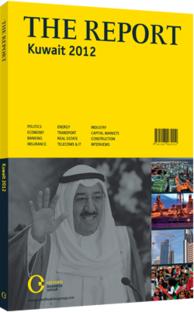Liquidity injection: An updated investment plan is set to boost the sector
The Kuwait Investment Authority (KIA) has announced plans to invest KD1bn ($3.6bn) in the commercial real estate sector over the next five years. This liquidity injection has the potential to boost property values, stimulate lending and strengthen the financial position of companies. By selectively targeting properties it deems underpriced, the KIA is likely to see strong returns from its investment as values recover over the medium term.
STATE OF THE MARKET: Although trends in the residential and investment segments are positive, the commercial market is suffering from excess supply that emerged between 2000 and 2007, when the sector notched a compound annual growth rate of 5.6%. According to official figures, the commercial market had an aggregate capacity of 811,000 sq metres in 2010, of which only 55% was occupied. By contrast, figures from the domestic ratings agency Capital Standards indicate that occupancy rates in mid-2008 were over 90%.
Given that development works initiated in the growth period are now hitting the market, oversupply may be more of an issue in coming years. According to estimates, roughly 350,000 sq metres of new office space will become available in 2011 and 2012. “Excess commercial capacity is a problem that will only worsen as major projects in Kuwait City such as the Al Hamra Tower and the Kuwait Business Town come on-line,” Joe Weberhofer, the property operations and marketing manager at the Action Real Estate Company, told OBG.
Oversupply has put downward pressure on commercial selling prices, which fell an estimated 5% in 2010, and rental rates, which dropped an estimated 47% from first-quarter 2008 to first-quarter 2010. According to Weberhofer, office rents in Kuwait City now average KD7 ($25) per sq metre, down from a peak of approximately KD14 ($50) in 2008. “Even for high-end office buildings, offering luxurious services and infrastructure, with private parking lots and a range of amenities, rental fees are only standing at KD7 ($11),” he said.
INVESTMENT PLAN: Given the weak state of the market, the KIA investment scheme has been welcomed by many in the local business community. Under phase one, the KIA has appointed the Kuwait Finance House (KFH), the country’s leading Islamic bank, to manage a real estate portfolio worth KD1bn ($3.6bn). Under the supervision of an executive committee including members of both parties, KFH will add to this portfolio by purchasing a select number of distressed and under-priced commercial properties over the next five years.
EXPECTED BENEFITS: As noted in a study by Capital Standards, this initiative is expected to benefit the commercial market in three ways. First, by allowing for the purchase of distressed and underpriced properties, it may help real estate firms to minimise debts and improve their liquidity. Second, by decreasing oversupply, it may stabilise plunging prices for rentals and sales. Third, by enhancing the financial position of companies, it may support local banks by reducing delinquencies.
The plan also looks set to achieve its main objective of generating robust profits for the KIA over the medium term, with the fund anticipating a minimum 6% return on its investment. “The five-year portfolio will focus on business real estate, as it has been most effected by current economic conditions and therefore is a candidate for achieving better returns,” KFH’s assistant director-general, Imad Abdullah Al Thaqib, told reporters.
Although the KIA’s plan has much promise, some have expressed reservations. Maytham Al Shakhs, a portfolio manager at Global Investment House, told reporters that the initiative is “a big mistake… because it will cause a huge increase in prices.” In a similar vein, Capital Standards has cautioned that a potential drawback of the strategy is that, “if real demand does not catch up with existing supply, the artificially inflated prices could give rise to another real estate bubble by the time the KIA expects to exit the sector in five years.”
Such risks, however, seem outweighed by the likely positive consequences of the plan for the commercial sector. In the end, success may depend rather on how quickly and effectively the KIA’s scheme can transition from the exploratory stage to actual implementation.
You have reached the limit of premium articles you can view for free.
Choose from the options below to purchase print or digital editions of our Reports. You can also purchase a website subscription giving you unlimited access to all of our Reports online for 12 months.
If you have already purchased this Report or have a website subscription, please login to continue.

